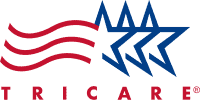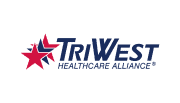
California Invests $52 Million In MAT Providers
On January 11, 2022, The Department of Health Care Services (DHCS) awarded $52 million to providers of Medication-Assisted Treatment (MAT) services throughout California. The money will be distributed among 105 service providers, many of whom see clients that face significant challenges to overcome when trying to get sober. While the providers all provide MAT, many also offer talk therapy, outpatient programs, job programs, and other resources to clients getting sober.
What Will the MAT Grants Do?
The grants are part of an overall campaign meant to reduce opioid addiction in communities through both prevention and treatment. The money distributed will help fund prevention efforts, assessments and diagnosis of substance use and opioid use disorder, and treatment to help people in communities that may traditionally be overlooked.
The main goal is to get people the help they need, no matter what community they are from. Money will go to addiction treatment programs, MAT providers, and other offices that can help administer MAT programs.
The initiative will also “focus on increasing services for Black, Tribal and Urban Indian, Latino, and LGBTQ+ communities; people experiencing homelessness; people in criminal justice settings; and youth,” according to the press release.
What About Prevention Efforts?
The state budget for 2023 and 2024 is expected to yield additional investments in opioid and substance use disorder prevention, treatment, and recovery. Money will be allocated to help public middle and high schools stock naloxone. The government will also make fentanyl testing strips available as a harm-reduction initiative.
In addition to these initiatives, there are also law enforcement initiatives targeting drug dealers who feed communities fentanyl.
“It is critical that treatment providers on the front lines of the opioid epidemic have the lifesaving resources they need when they need them,” said Governor Newsom of the efforts. “Today’s efforts, in coordination with the federal government, bolster our state’s multi-pronged approach to tackling this ongoing crisis and protecting as many Californians as possible.”
Harm Reduction in California
As previously mentioned, California is investing some money into prevention and education. A part of overdose prevention is harm reduction, which can help decrease the dangers of drug use until a user can get sober. Fentanyl testing strips can test almost any drug for the presence of fentanyl, which can help users decide whether or not to take the drug or even decrease the amount of drug they take.
Harm reduction has helped people stay alive in homeless encampments and even survive overdoses in sober living facilities. Having naloxone (brand name Narcan) can help reverse a deadly overdose and help stabilize victims until EMTs arrive.
While nothing can beat prevention, the reality is that people have used substances to change their moods since alcohol was invented, if not before. Helping people who use drugs stay safe until they’re ready to stop saves lives.
Treatment is available throughout California for people who need it. Settlement money from various drug companies has helped fund many new initiatives. More money will be distributed over the next decade, according to what is determined by the need. These particular funds are meant to specifically go to people in marginalized communities to help create healthcare equity.
Getting Help for Addiction
Addiction is a real disease that causes changes to the way a person feels, thinks, and behaves. It can cause catastrophic problems for people that result in the loss of relationships, financial strife, and involvement in the justice system.
We can help you reclaim your life and learn to live without the use of substances. We’re here to offer you compassionate guidance and formulate a plan for long-term sobriety. Please call us at 619-363-4767 to learn about our programs and how we can help.
Categories
Addiction San Diego





